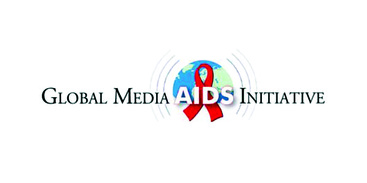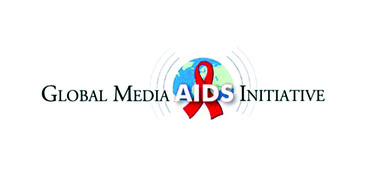Press conference on Global Media AIDS Initiative
Addressing correspondents on the occasion of World AIDS Day were outgoing Chair Bill Roedy, President of MTV Networks International, and Dali Mpofu, Chief Executive Officer of the South African Broadcasting Corporation, who takes the helm of the Initiative’s Leadership Committee today.
The Global Media AIDS Initiative was launched in 2004 by United Nations Secretary-General Kofi Annan, in collaboration with the Joint United Nations Programme on HIV/AIDS (UNAIDS) and the Kaiser Family Foundation, to mobilize the world’s media in the fight against HIV and the AIDS epidemic. Its strategy is to gain the commitment of media leaders in integrating HIV/AIDS messaging across their programming, to give airtime and page space to the issue, to put in place policies and training on HIV and AIDS for their staff and to establish a formal corporate position on those commitments.
Mr. Roedy, who was appointed to head the Leadership Committee in April 2005, said up to two thirds of new HIV infections could be prevented with proper education, and that was where the media came in. Able to reach literally every person on the planet, media entities could actually save lives on a global scale. The Initiative sought to challenge every media company in the world to step up to the role that it could play in making HIV/AIDS programming “part of the DNA of every single media company”.
Having started off with some 20 media companies, the Initiative now included 150 companies, spanning 76 countries around the world, he continued. The long list of activities undertaken by the Initiative included media “summits” in every major region, which served as forums for exchanging information and best practices, while seeking specific commitments to fight AIDS, including pledges of airtime and the broadcasting of relevant local messaging. Very importantly, all Initiative-related content produced by media companies must be “rights free -– no cost, no branding, no strings attached” -- so that the materials could be used anywhere in the world. Hundreds of millions of dollars worth of production and airtime continued to be contributed.
Among other examples of recent initiatives, he cited a challenge to some of the world’s leading advertising and marketing agencies to produce a new multi-platform campaign, “Turn on TV”,to distribute prevention and anti-stigma messages. MTV was airing 24 unusual and controversial spots on its networks to an audience of more than a billion people around the world, as well as on MTV Web and mobile platforms via Staying Alive. The campaign was also being offered rights-free and cost-free to any broadcaster or content distributor, with commitments from 70 broadcasters so far.
Mr. Mpofu said African leadership was particularly important to the Initiative, as their continent was the most affected region and it could share its experience and expertise with the rest of the world. According to statistics, up to 25 per cent of infected people in the United States did not know they were infected. If one extrapolated those numbers to South Africa, about a million people would not know they were infected. With that kind of a situation, today’s key message of prevention became a mockery.
Under those circumstances, the media could play a crucial role, he said. In response to the Initiative, an African Broadcast Media Partnership against HIV/AIDS had just launched a coordinated, multi-year campaign in 25 countries under the theme “An HIV-Free Generation… it Begins with You”. The campaign involved 41 public and commercial radio and TV broadcast companies and focused on prevention and the importance of testing.
Outlining his main challenges for the immediate future, he expressed his intention to bring into the Leadership Committee people representing some of the regions newly affected by HIV/AIDS. In order to ensure continuity, Mr. Roedy had agreed to stay on as a member. Hopefully there would be continuity on the part of the new United Nations administration because the Organization’s support was central to the Initiative. The Initiative aimed to double its membership, seeking concrete action and commitments from media firms joining it. The new leadership would also seek to expand partnerships to other sectors, including telecommunications and other businesses.
Responding to several questions regarding financing, Mr. Mpofu stressed the need to mobilize resources through partnerships with various sectors of society. Mr. Roedy added that while money was critical in fighting AIDS, the Initiative must also use the various strengths of its participant companies. Lack of resources was not an excuse. Firms with unsold inventories, for example, should use them, and others might put their creative people to good use by making their skills and expertise available.
To a query about the Initiative’s impact in its first two years, Mr. Roedy said that on the prevention side, it had played an important role in raising awareness through a variety of media, ranging from traditional public service announcements to concerts and movies. “We have also tried to be more clever, intertwining the content in scripts and making it part of life, if you will”, he added. The message was that living with HIV was not a death sentence, but part of life.
Noting that the Initiative’s impact on stigma had been less encouraging, he said that while people were now more open in talking about HIV infection with family members, a serious problem still remained, particularly outside the family. Stigma was “a very difficult needle to move” and it hindered testing, which actually needed to go up to 100 per cent. Thus, while the level of effort by media and business companies had been highly encouraging, they still had not been able “to crack the numbers”. The latest figures showed 40 million people living with HIV. Almost 3 million had died and there were more than 4 million new infections. That meant not enough had been done.
UNResponding to questions about his prevention strategy, Mr. Mpofu said prevention should, in no way, detract from the importance of treatment. However, looking at the long-term goal of an AIDS-free generation, emphasis must be placed on prevention, because it was the paradox of HIV/AIDS that, although it was not curable, it was 100 per cent preventable. Practically, the question of testing became crucial because without knowing one’s status it would be impossible to condition one’s behaviour in a particular way. It was also important to address stigma and ignorance. Being media specialists, members of the Global Media AIDS Initiative intended to use the powerful tools at their disposal to communicate that message, while also promoting partnerships with various players who could promote real change.











